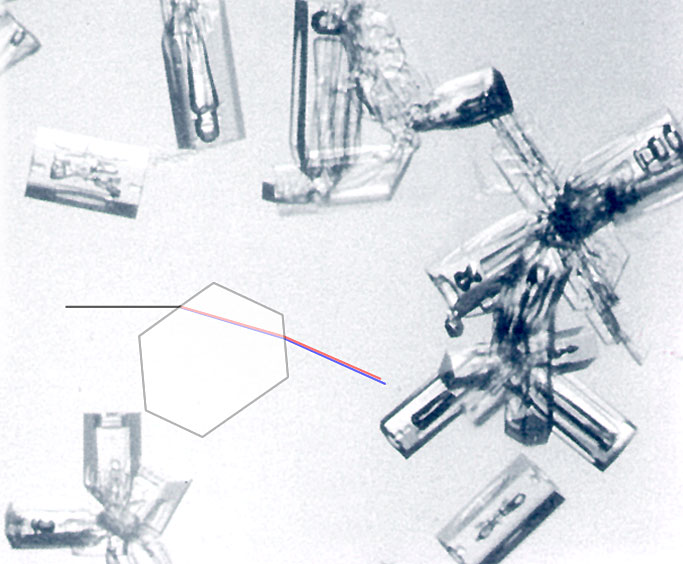Nearly all of the halos are made by simple geometry ice crystals. They are plate or column habit hexagonal prisms or hexagonal prisms with pyramidal ends.
Not so the most common halo of all. That halo needs hexagonal prisms with random or near random orientation in the clouds. The difficulty is that the simple crystals, unless too small to form halos, are oriented rather precisely by aerodynamic drag forces as they drift slowly downwards relative to local air currents. Short stubby crystals might tumble but they are rarely sampled in significant concentrations.
The 22° halo culprits are more likely cluster crystals of several joined hexagonal columns. Each column element acts to form the halo. Light passes between prism faces inclined 60° to each other to undergo a minimum deflection of ~22°. That forms the halo’s inner red edge but more light is also refracted into larger angles.

Cluster crystals imaged at the South Pole by Walter Tape.
|





